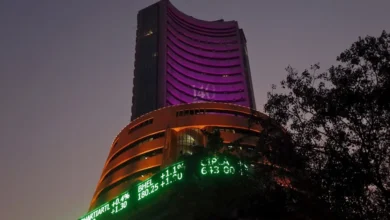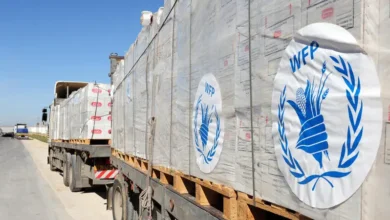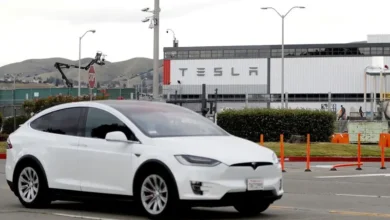Saudi Arabia’s economic diversification: Driving growth beyond oil

Saudi Arabia’s non-oil sector is experiencing a surge in activity, signaling a pivotal turning point in the Kingdom’s economic diversification efforts. With recent data indicating a growth trajectory, the country stands poised to redefine its economic landscape beyond its traditional reliance on oil revenues.
Robust demand played a key role in pushing non-oil business activity in Saudi Arabia in March, with output accelerating to a six-month high, according to a survey released last week.
The seasonally-adjusted Riyad Bank Saudi Arabia Purchasing Managers’ Index (PMI) for March was 57.0, slightly down from February’s 57.2, but still well above the 50.0 mark, indicating expansion in activity.
The output sub-index rose to 62.2 in March from 61.5 in February, marking its highest level since September of the previous year. This increase was fueled by new orders, especially in the manufacturing sector, pointing toward a boost in production.
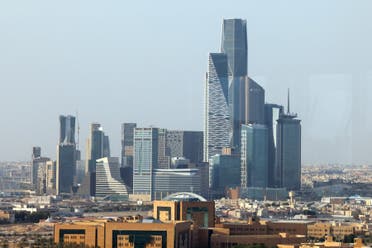
“The PMI for Saudi Arabia showcased a notable upswing as the non-oil economy exhibited expansion in the most recent period,” Naif Al-Ghaith, chief economist at Riyad Bank, said in a statement. “Business activity experienced a substantial uptick, marking the most significant growth in six months. The positive momentum also prompted accelerated purchasing activities and additional hiring, underscoring a buoyant market outlook.”
Amidst the dynamic economic shifts within Saudi Arabia, experts underscore the essential contribution of the non-oil private sector to driving sustainable job creation and enhancing total factor productivity growth, contrasting it with the capital-intensive oil and gas sector’s limitations in meeting the demands of the burgeoning young and educated population.
“With approximately 60 percent of the population under the age of 30, there is a pressing need to pivot toward the non-oil private enterprises, rather than relying solely on the public sector, as the primary driver of sustainable job creation and heightened total factor productivity growth,” founder, president and chief economist at Nasser Saidi & Associates, Nasser Saidi, emphasized.
“Expansionary readings of the Saudi PMI for March 2024 echo the resilience and resurgence of the private sector following the challenges posed by the COVID-19 pandemic,” he told Al Arabiya English. “The spike in demand has spurred a flurry of new orders and clientele, with export orders rebounding notably after a period of subdued activity. Noteworthy is the observed rise in employment alongside mild wage pressures, positioned to bolster the financial standing of firms and listed companies, thereby fortifying the overall health of the financial markets.”
Advancing Vision 2030
Saudi Arabia, the world’s biggest oil exporter, is diversifying its economy away from oil, investing in sectors like tourism, construction and manufacturing under Vision 2030, the Kingdom’s strategic framework launched by the government in April 2016.
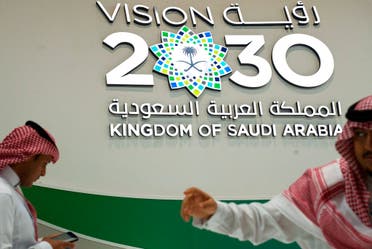
Recent reports show optimism in business outlook, especially in construction, wholesale and retail. Initiatives and policy reforms aim to reduce hydrocarbon dependency, boost domestic industries, and develop technology, property, tourism and infrastructure.
“Saudi Arabia is progressing steadily toward achieving the ambitious objectives outlined in Vision 2030, buoyed by supportive public investments and comprehensive policy and legal reforms,” Saidi explained. “The Kingdom has pursued rapid diversification across three pivotal fronts: enhancing trade diversity to elevate non-oil trade share, boosting export value-added and expanding trade partnerships; pursuing government revenue diversification through VAT and other broad-based tax measures; and broadening production horizons to lessen reliance on oil-centric industries.”
Last month, official data revealed that while Saudi Arabia’s GDP contracted by 0.8 percent in 2023 due to a 9 percent decline in oil activity, the non-oil sector expanded by 4.4 percent during the same period compared to the previous year.
The Ministry of Economy and Planning announced that non-oil economic activity accounted for 50 percent of Saudi Arabia’s GDP in 2023, marking a historic high. Valued at $453 billion in constant prices, the non-oil economy was stimulated by sustained growth in investment, consumption and exports.
“A significant driver of this growth, constituting 40 percent, is private consumption, fueled by the emergence of new sectors such as entertainment, hospitality and tourism,” Saidi mentioned. “Notably, social reforms have propelled a rise in female labor force participation rate, concurrently reducing the female unemployment rate to a historic low of 13.7 percent in Q4 2023. This shift towards dual-income households has not only elevated household income but has also facilitated increased consumption rates and wealth accumulation.”
He added: “These developments have been instrumental in bolstering the services sector, including retail, and catalyzing the digital economy, with women playing important roles in both arenas.”
Unlocking tourism potential

Among the various non-oil sectors experiencing growth in Saudi Arabia, Saidi believes that tourism has strong potential, given the country’s capacity to attract cultural, historical, and religious tourists.
He noted that “Saudi Arabia made an exceptional achievement of hosting 27 million foreign tourists and 77 million domestic visitors in 2023, meeting previous targets set for 2030.”
Saudi Arabia has recently revised its tourism goals, aiming to welcome 150 million visitors by 2030, an increase from the initial target of 100 million. With a focus on developing its hospitality and real estate sectors, Saudi Arabia’s tourism sector is primed for significant growth. By attracting millions of visitors, Saudi Arabia aims to move revenue generation forward and enhance its global reputation as a tourist destination.
“Strategic initiatives such as the development of resorts along the Red Sea and hosting major events like gaming conferences and concerts, coupled with facilitative measures like the unified GCC tourist visa and the upcoming Expo 2030, are projected to fortify tourism prospects,” Saidi stressed.
The plan for the unified GCC tourist visa was driven by the Gulf Cooperation Council. Similar to the Schengen visa in Europe, it aims to simplify travel within the Gulf region by allowing tourists and residents to move between member countries with a single visa.
Outlook and projections
Non-oil companies anticipate sustained demand, bolstering business activity in the foreseeable future. Positive expectations for the upcoming year, the most optimistic since November, indicate a favorable outlook for the non-oil sector’s growth. This sentiment aligns with the latest trends, suggesting continued progression and economic vitality.
“Services-related industries such as financial services, wholesale and retail trade, restaurants, hotels, as well as transport and logistics, are expected to lead the upswing,” Saidi emphasized. “These sectors are anticipated to experience rapid development, reflecting a buoyant economic landscape. However, challenges may arise in the construction sector due to disruptions in Red Sea shipping, leading to increased costs of construction inputs and potential cost overruns.”
Saidi suggested a positive near-term outlook driven by several key factors. Those include the pipeline of Mega and Giga projects, preparations for Expo 2030 and the World Cup 2034, and the ongoing regional headquarters project, where licenses are being issued at a remarkable rate of ten per week.
“The Public Investment Fund’s domestic investments in new and emerging sectors are also expected to provide crucial support to non-oil activity, further fueling economic growth.”
Projections indicate Saudi economic growth of 2.7 percent in 2024 and 5.5 percent in 2025, post a 1.1 percent contraction in 2023, according to the latest International Monetary Fund estimates.
